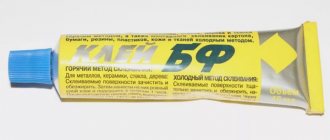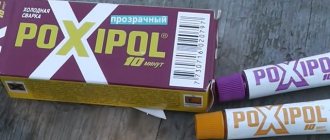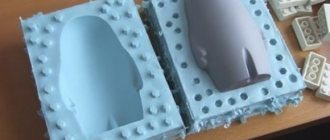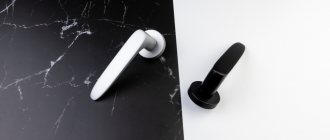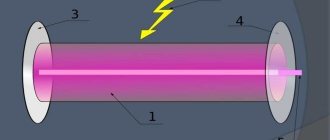What do we know about silicone? This material is a polymer with a very high level of strength.
Externally, liquid silicone is somewhat reminiscent of resin, and its production uses synthetic rubber, invented in the 20th century, but which is nevertheless widespread today.
The most popular materials based on it are probably glue and sealant. In addition to silicone, other substances are added to adhesives during their manufacture, which are called healing additives or fillers.
Where can silicone be used?
Using silicone material you can glue, for example:
- ceramics;
- hardware;
- plastic;
- rubber;
- glass products;
- paper;
- aluminum;
- tiles, and more.
Silicone is used in so many areas that if we listed them, a whole day would not be enough. If we talk about the industrial field, then it is used during manufacturing:
- dishes;
- a variety of kitchen utensils;
- baking dishes, and more.
Among other things, it is used to seal bathtubs and windows, and is also widely used in the medical field and cosmetology.
Note: silicone glue is used during repair work on household appliances, electronics, radio products, as well as various crafts.
But it is most widely used in the domestic sphere, in construction, and is also indispensable during the renovation of premises, especially in situations where increased resistance to moisture is required.
Colored or transparent
When it is necessary to obtain a seam that will be similar to the base, a colored type of glue is selected. It will not be possible to paint the seam afterwards, so there must be a colored version from the beginning.
To give the desired shade, manufacturers use pigments, but a large number of them can lead to a decrease in the strength of the composition, so professionals often opt for a non-colored option.
Professionals often choose the colorless option.
What is the difference between silicone adhesive and sealant?
In fact, there is not much difference as such, and therefore, on the market you can often see on sale a product called glue - sealant.
These adhesive-sealants are similar not only in composition, but in most characteristics and pricing policy. The difference lies in some additives as well as texture.
Thus, sealant is thicker in nature, while glue is liquid. Differences can also be observed in the form of release, container, type of nozzle, and this is not surprising, because each of them essentially has its own purpose.
In most cases, glue is packaged in small tubes, and it can be applied with a special gun. Whereas a construction gun is used to work with sealant.
It is the sealant that is used for long seams that need sealing, as well as for sealing pipes, walls, plastic structures, and glass products.
While glue is good to use if you need, for example, to glue brickwork, corners, or glue dishes, shoes, and more.
Introduction to the topic
By nature of origin, silicones belong to the category of organosilicon compounds. The properties of the adhesive depend on the component composition and structure.
Due to its good adhesion to various surfaces and low cost, silicone adhesive is very popular in the construction industry.
Its main advantages:
- Resistant to moisture, light and temperature changes.
- Elastic structure in different operating conditions.
- High strength polymer after complete drying.
Silicone-based adhesives are produced in a wide range, so it is easy to find a product on sale for a specific type of work. The compositions are valued for their good sealing properties, quick setting and versatility of use. Thanks to the introduction of modifying additives, adhesives acquire important performance characteristics.
Composition and characteristics of silicone glue
As already mentioned, in the production of silicone material, artificial rubber is used, which makes up 1⁄2 of it.
For construction, it is most convenient to use colorless glue. However, if necessary, you can buy both white and black, and there are also other colors on sale, in a word, you can choose everything. According to GOST, you can add to the product:
- plasticizers;
- extenders;
- antiseptics;
- catalysts;
- as well as a number of other additives.
Most of the products for use at home can be purchased in the form of a unary composition. Only some adhesives are sold as two-component adhesives (that is, together with a hardener).
Due to some of the properties that silicone is endowed with, the seam, after hardening, becomes resistant to frost and retains its qualities even at -40 degrees. Or vice versa, at too high temperatures, up to + 200 degrees.
Note: if necessary, you can buy silicone glue for use at both fairly low and very high temperatures, in other words extreme.
Each package contains information about the temperature at which the silicone adhesive begins to melt.
So, there are types of adhesives that can be used even at 300 - 400 degrees. Adhesives containing silicone are usually waterproof, which allows them to be used for gluing dishes, aquariums, and glass products.
This material is a kind of insulator because it practically does not conduct electric current.
Rating of the best
Today there are more than 200 brands of silicone sealants. Not all of them meet the stated characteristics.
In order not to be mistaken in quality, we offer a list of manufacturers and brands of adhesives that have long proven themselves:
MAKROFLEX NX108
Transparent silicone sealant MAKROFLEX NX108 is a one-component waterproof composition. Has the widest range of uses. It is used for fixing and sealing joints of elements in bathrooms, saunas, swimming pools, and sealing cracks. With its help, installation and repair of refrigerator and freezer units, repair of ships (motor boats, yachts) and automobile units are carried out. Sealing of window and door openings.
Produced in Russia using Finnish technology. Application temperature from 7 to 45 ˚C. Wide operating temperature range from -38 to +140 ˚C. Setting time 15 minutes, until complete drying 48 hours. The neutral chemical composition does not cause corrosive changes in the material. Packaging: a convenient tube with a cone dispenser. Package price 290 gr. – from 280 rub.
Moment Silicone neutral
Moment Silicone neutral – gray one-component adhesive. High-quality and reliable domestic composition. Used for installing mirrors, glass, ceramic, sanitary ware in bathrooms, showers, and lavatories. Suitable for repairing refrigeration and ventilation systems, watercraft, and automotive components. Not recommended for working with natural stone and aquarium equipment.
Application temperature from 7 to 40˚C. Operating range from -38 to +140˚С. Setting time 15–20 minutes. Does not stain mating surfaces. Time until complete curing is 48 hours. Resistant to UV rays. Available in a tube with a 280 g dispenser, package price starts from 280 rubles.
CERESIT CS 24
Universal silicone sealant CERESIT CS 24 is an acidic one-component adhesive. Designed for processing the perimeter of door and window openings, shop windows, double-glazed windows, colorless. Resistant to the formation of fungal and mold deposits. Can be used for exterior work without primer.
Produced in Russia using German technology. Not for use on surfaces made of zinc, copper, iron, marble, limestone. Application temperature from 10 to 35˚C. Operating range from -40 to +120˚C. Curing time 20 minutes, until complete setting 48 hours. Price per package (tube with dispenser) 280 g. from 220 rub.
Liqui Moly "Silicon-Dichtmasse"
Black silicone sealant Liqui Moly “Silicon-Dichtmasse”. German brand Liqui Moly, specializing in the production of automotive oils and lubricants. A one-component, high-temperature composition, which, upon polymerization, forms sealing connections between elements made of glass, wood, plastic, and porcelain. It is used for repair and maintenance of automobile components, watercraft, installation and gluing of glass parts.
Resistant to vibration loads. Application temperature from 5 to 40˚C. Operating range from -60 to +300˚C. Film formation time is 8–12 minutes, until complete drying 24 hours. Price for 80 ml packaging. from 500 rub.
Ravak Professional X01201
Ravak Professional X01201 is a transparent sealant from the Czech manufacturer of plumbing fixtures of the same name. It is designed for sealing plumbing fixtures and lining materials in bathtubs and showers. Retains antifungal properties for a long time. Reliably fixes aluminum, acrylic, glass, stone, ceramics, varnish. Non-toxic, does not change color over time.
Temperature for installation is from 10 to 40˚C. Operating range from -20 to +120˚C. Curing time 20 minutes, until complete adhesion 48 hours. Sold in tubes with a 310 ml dispenser. Package price from 720 rub.
Among other properties of silicone seam, the following can be noted:
- It is quite strong and elastic.
- It has a high level of resistance to radiation and UV rays.
- It retains its original color (transparency) for a fairly long period.
- Repels saws and dirt.
- Does not oxidize.
It should be noted that only high-quality silicone glue has all the above characteristics and is truly moisture resistant.
If the manufacturer used cheap materials and additives in its manufacture, its service life will be quite short and fragile. Quite convenient to use.
Its consistency is moderately thick, which makes it possible to use it in work for filling small holes and cracks.
Another advantage is that it is completely non-toxic and safe for humans, unlike a number of other similar products.
You also don’t need to have any special skills to work with it, and it dries quite quickly.
What products can be glued
If you follow the standard rules, you will be able to glue any product, including a watch strap, children's toys, construction components (seals, bushings), and medical tubes. The result of the repair directly depends on a number of factors, including the current condition of the product, the degree of damage, the adhesive solution used and the accuracy of the work.
See also
Characteristics and rules for choosing glue for polyethylene foam, review of popular brands
Types and features of material
If we talk about rubber, it can be siloxane or fluorosiloxane.
Due to contact with air, polymerization occurs, after which the silicone material, bonded to the surface, becomes hard, but remains quite elastic. The sealed tube in which the silicone glue is packaged is used precisely to prevent it from hardening earlier than necessary.
Depending on the PH level, various additives in silicone glue, all products to which silicone glue is added are divided into the following types:
- Acidic. Despite their relatively high cost, they are not intended for gluing all types of materials. So, they are not suitable for working with metal, causing corrosion. And such products simply corrode very delicate raw materials.
- Alkaline. They contain silicon, amines, and are also quite heat-resistant, due to which in most cases they are intended only for certain work.
- Neutral. They are so suitable for working with a wide variety of materials. And although they are by no means cheap, you don’t have to worry about the level of bonding and strength. They will last quite a long time.
Note: antiseptics are added to most adhesives, which allows the material to be glued even in places that may rot or mold over time.
The method of application, container, its volume, cost and manufacturer also differ, and in order to choose a really good adhesive, you need to learn as much as possible about each of them before purchasing.
Examples
One example is Kim Tec silicone adhesive and sealant. This product is special in that the manufacturer offers various specialized formulations. For example, one-component products from Kim Tec are excellent for sealing joints. Silicone paste is also suitable for vertical seams. In turn, adhesive-sealant will be indispensable when renovating a bathroom. These are the joints of the tiles, the corners of the bath itself, etc. There is a separate range of acrylic sealants - they are suitable for parquet floors.
Silicone glue “Moment”, in turn, is much more widespread. Buyers choose domestic products more often than foreign ones. Moreover, in terms of technical characteristics they are completely interchangeable. Sealants and adhesives are used for various purposes - from sealing leaks and drafts in houses and outbuildings, to interior work and very private use. For example, door handles, window frames, etc.
So, we found out what silicone glue is and what it consists of.
Some tips for choosing glue
Before purchasing any glue, including silicone, you should first read the instructions to make sure that the product you choose is suitable for the type of work in which you intend to use it.
For example, if the plan involves gluing metal elements, you need to pay attention to the acid content; there should not be any.
But if work is carried out to seal the seams on the tiles, between the wall and the bathroom, it is better to purchase an adhesive that contains them.
If necessary, it will be easier to remove it from the surface with a remover (silicone glue cleaner).
In most cases, if plumbing repairs are needed, consumers opt for white sealant.
But if the product will be used to work with fabric, paper products, and household appliances, then a colorless material will be more suitable.
From all of the above, we can conclude that in the modern world you can purchase the type of glue that is needed in a given situation, due to the fact that there are several types. Let's take a closer look at them.
- Aquarium (or glass). The name here speaks for itself and it is intended for gluing corners and joints in an aquarium. Danish type of glue is non-toxic. It is quite durable and not afraid of water and UV rays.
- Sanitary. Used for work in the bathroom, kitchen, toilets, and other places with high humidity levels. The composition includes, among other things, antiseptics and fungicidal additives.
- Automotive. This type of sealant is intended for gluing joints and gaskets in equipment.
- High temperature. Before use, silicone glue is poured into a heat gun, where it is heated, after which it can be applied to the surface. The product is used for repair work on stoves and other types of products where high temperatures occur.
- For outdoor work. This type of product is suitable for outdoor work. They are highly durable and do not react to precipitation, temperature changes, etc.
If necessary, you can also purchase a universal type of silicone adhesive, which allows you to bond almost all types of materials.
Moreover, they insulate electricity well and protect against moisture. They are mostly used during repairs or for various crafts.
Consumption
In order for the repair to be done efficiently and all seams and joints to be sealed beautifully and reliably, it is important to know exactly how it needs to be applied and how much material to use. When calculating the most correct consumption of sealant per 1 m of seam, you need to know its thickness and application technology. If we are talking about a corner seam between the bathtub and the tiles, then the best would be a depth of 6 mm and a width of 3 mm. Using such calculations, 20 ml of material will need to be used per meter of area. Often the standard package contains 310 ml, and in order to apply it correctly and economically, it is best to be guided by the indicators given in the table:
| Seam width in mm | |||||||
| Seam depth in mm | 5 | 7 | 10 | 12 | 15 | 20 | 25 |
| 5 | 12 | 8 | 6 | — | — | — | — |
| 7 | — | 6 | 4 | 3 | — | — | — |
| 10 | — | — | 3 | 2.5 | 2 | 1.5 | — |
| 12 | — | — | — | 2.1 | 1.7 | 1.2 | 1 |
| 15 | — | — | — | — | 1.3 | 1 | 0.8 |
If a 600 ml bag was chosen for the work, then the calculations will be different for 1 m of seam:
| Seam width | |||||||
| Seam depth | 5 | 7 | 10 | 12 | 15 | 20 | 25 |
| 5 | 23 | 15 | 11 | — | — | — | — |
| 7 | — | 11 | 7 | 6 | — | — | — |
| 10 | — | — | 6 | 5 | 4 | 3 | — |
| 12 | — | — | — | 4 | 3 | 2.4 | 2 |
| 15 | — | — | — | — | 2.5 | 1.9 | 1.4 |
For a more economical use of sealant, it is better to apply a semicircular seam, which is possible when working with a spatula having an edge of 6 mm; in addition, it is very important to correctly trim the nose of the tube itself, from where the material will come. To do this, you need to attach the spatula to the spout at an angle of forty-five degrees and open the package.
Principles of working with glue
So how to use silicone glue correctly? The product is easy to use, so even a beginner can do it. Another thing is the correct and high-quality preparation of the base. It is important that it is clean, dry, and smooth.
It is also necessary to degrease the surface in advance, which will improve the quality of adhesion. It is best to remove excess fat with a cleaning solution with a special composition.
After all the preparatory work has been carried out, it is recommended to cover the edges of the joints with paper tape.
This will allow you to carry out the work cleanly, without marks, and apply the glue in an even layer.
The operating algorithm is as follows:
- First, cut off the spout or remove the cap from the tube;
- then squeeze the required amount of product into the glue gun;
- then the material is applied to one of the surfaces to be fastened, after which they are either fixed or an adhesive seam is laid;
- Now you should wait 10 - 30 minutes, during which time the silicone material usually glues the surfaces.
But it is recommended to fully use the product no earlier than a day later, during which time polymerization occurs.
Note: if there is a need to speed up the polymerization process, you should find a room in which the temperature is 5 degrees above room temperature.
It is not recommended to make the adhesive layer too thick (no more than 20 mm) because otherwise it will remain viscous inside the seam.
How to work
Knowing how to glue silicone rubber, you can figure out how to use glue to restore a silicone product:
- Treat the surface with a special degreaser. If you don’t have special white alcohol, you can use regular medical alcohol or acetone.
- Carefully apply the glue in small portions. If there are residues, they will harden on the surface and ruin the appearance of the product.
- Glue both parts by pressing firmly. Then hold them in this position for about a minute to strengthen the grip and prevent possible tears.
- Carry out work in a well-ventilated area. The air temperature in the room should be at least +25°C.
- Make sure that the glue does not get on the skin. After all, this can cause burns and irritation. It is better to work with gloves. If a little product gets on your skin, immediately rinse the affected area under running water.
If you follow the recommendations described above, you will be able to glue silicone together efficiently and also prevent harm to your health.
Types of brands and pricing policy
In most cases, prices for silicone glue vary from 200 to 500 rubles per tube and depend on the manufacturer. The product is in a container size 10 - 30 ml. can be purchased at a lower cost, for about 20 - 100 rubles.
Let's get acquainted with the most popular types that are sold in stores
- RTV 118Q Provides food grade glue that can come into contact with food and does not pose a health hazard. They are usually used to glue dishes and ceramics together. In everyday life it is used if you need to repair, for example, a remote control or other rubber products. Can be used for work at +260 degrees.
- Jaba. Silicone glue that can be used for working with aquariums. They can also glue ceramic and glass products and seal small leaks.
- Loctite 5699 Used in the manufacture of gaskets, and also when it is necessary to glue, for example, a rigid flange base. For sealing cast housings and car transmissions.
- "Pentelast 1143". It is an acid adhesive with a wide range of applications. It has a high level of strength and is suitable for working with all types of materials except metal.
- DoneDeal. Silicone adhesive, which is used for car repair work. It is heat resistant. Able to withstand high temperatures, strong vibration, as well as humidity and, importantly, exposure to various chemicals.
- "Avtogermesil". This product is oil and water resistant. Sold in containers of 70-160 grams and 5-8 kilograms. It is used in work with gas tanks, engines, and bodies. Another advantage is that it can be used in a cooling system.
If everything is done correctly from the beginning and the glue seam is clean, it will last quite a long time, without losing its quality and strength.
At the same time, we must not forget that, if necessary, you can replace it with a new layer of adhesive.
